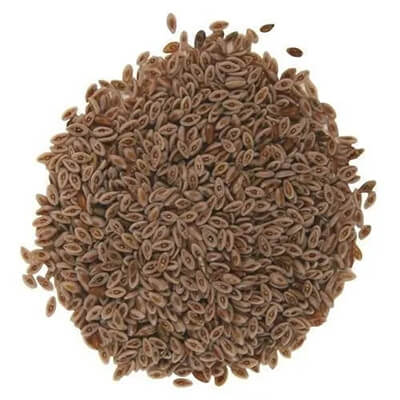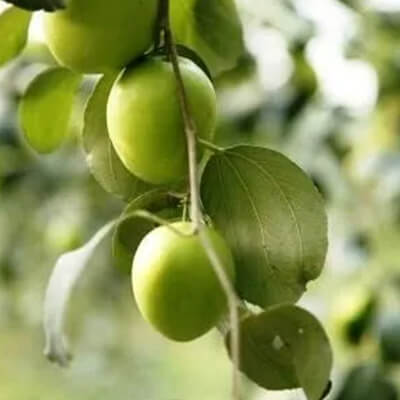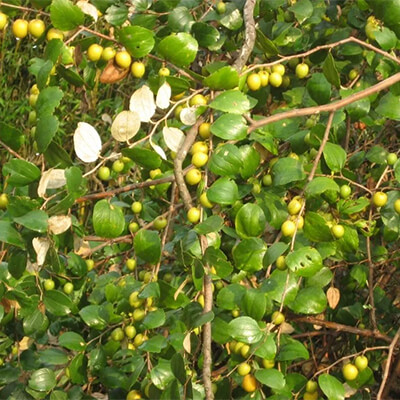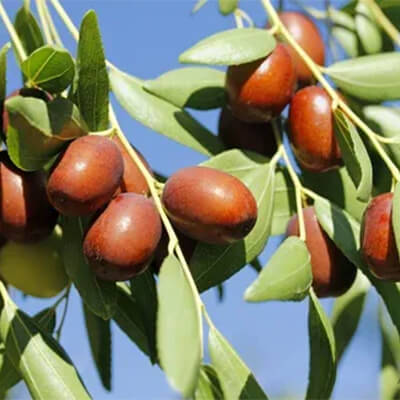On This Page
Ashvagol – A Dietary Fiber to Promote Laxation
Introduction
Ashvagol (mother herb) botanically known as Plantago ovata is an annual herb belonging to the Plantaginaceae family. In the Plantaginaceae family 281 species are present out of which 10 species are found in India and two species i.e., Plantago ovata and Plantago psyllium are cultivated for their seed husk i.e., used in the cosmetic industry and pharmaceutical industries. It is commonly famous for the name Psyllium husk, where Psyllium is derived from the Latin word “Planta ” which means sole, and the ovata word is related to the shape of the leaves of Ashvagol. Ashvagol is folk medicine that is widely used for gastric disorders (gastrointestinal cleanser) and wound healing. Ashvagol is an excellent laxative agent and even WHO (World health organization) has approved Ashvagol as a laxative agent. As per Ayurvedic classical texts, Ashvagol is Madhura (sweet) in taste and cold in potency. It consists of various chemical constituents like Aucubin, mucilage, amino acid, linoleic acid, etc which exhibit anti-diabetic activity, anti-hypertensive activity, hypocholesterolemia effect, etc. Ashvagol is also used as a drug delivery agent.
Basonym of Ashvagol
अश्वकर्ण सदृश बीज: |
Seeds of the Ashvagol (Plantago ovata) resemble the ear of a horse. The original word Isapgol is Persian made up of two words “Isap ” and “Gol”. Isap means horse and Gol means ear. Therefore, the literal meaning of Isapgol is the ear of the horse.
Synonyms of Ashvagol
- According to habitat
वङ्गसेन – वङ्ग देशे बाहुल्येन जायमान: |
Agastya plant grows more in Vnaga Desha (Bengal region).
- According to morphology
अश्वकर्ण- Seeds resemble the ear of the horse.
स्निग्ध बीज- Seeds contain oily substances.
- According to properties and action
शीत बीज- Seeds are cold in potency.
स्निग्ध जीरक- Seeds are oily and resemble cumin seeds.
Regional names of Ashvagol
- Spogel seed, Isapgol seed, Psyllium husk (English)
- Isapgol (Hindi)
- Isapgol (Kannada)
- Snigdhajirakam (Malayalam)
- Isagol (Marathi)
- Neerudu Vittulu (Telugu)
- Bazr-e-qatuna, Qasliyoos and Barghosh (Unani)
- Asfiyoos (Persian)
Botanical Name
Plantago ovata Forsk.
Plantago means having a flat level surface
Ovata means egg-shaped as solid in outline.
Family
Plantaginaceae (Ashvagol Kula)
Ayurveda Reference for Ashvagol (Plantago ovata Forsk.)

Scientific classification of Ashvagol
| Kingdom | Plantae |
| Class | Dicotyledons |
| Subclass | Gamopetalae |
| Series | Bicarpellate |
| Order | Lamiales |
| Family | Plantaginaceae |
| Genus | Plantago |
| Species | ovata |
Classification of Ashvagol as per Charaka and Sushruta
- Charaka: Not included in Mahakshaya
- Sushruta: Not mentioned in Gana
Ashvagol’s description in Brihtrayi
No description in Brihtrayi
Historical background of Ashvagol
It is a scapigerous, annual herb. The flowers are green colored and are found mainly in Punjab state. It is a European plant that is mainly used by the Unani Hakims. It is not described in any of the Nighantus. Latest books like Ayurveda Vijnana (Sitabija), Shaligrama Nighantu (Isabgol), and Siddha Bhesaja Manimala (Isvarabola) have delineated it.
Varieties of Ashvagol
Based on the color of the seeds there are three types:
- White
- Red
- Black
Substitute of Ashvagol
- Plantago major
- Plantago patagonica
- Plantago psyllium
- Plantago aristate
- Plantago argentia
- Plantago rhodosperma
Adulterant of Ashvagol
- Plantago lanceolata
External morphology of Plantago ovata
- Habit: A stainless or nearly stainless softly hairy or wooly annual.
- Leaves: 7.5-20 cm long, scarcely reaching 0.6 cm broad, narrowly linear or filiform, finely acuminate, entire or distantly toothed, attenuated at the base, usually 3-nerved. Scapes longer or shorter than the leaves, glabrous or pubescent.
- Inflorescence: Spike
- Flowers: 1-4 cm long, bracts 4 mm long, glabrous calyx, sepals are elliptic, obtuse, corolla lobes rounded, 3 mm long.
- Fruit: Capsule, 8 mm long, ellipsoid, obtuse, the upper half coming off as a blunt conical lid, membranous, glabrous.
- Seed: 3 mm long, ovoid-oblong, boat-shaped, smooth, yellowish-brown in color.
Flowering and fruiting time
The rainy season, Summer to the autumn season.
Distribution of Ashvagol
It is wild in Punjab plains and lower hills from the Sutlej onwards, Sind and Baluchistan. It is cultivated in hot and dry places.
The useful part of Ashvagol
Seed, Husk
Seed: The seed of Ashvgol is a hard, translucent, boat-shaped structure up to 8 mm long and 1 mm broad, the surface is glossy and shining, having a pinkish-brown color. There is an oval spot in the center of the convex (dorsal) surface on the Concave (ventral) surface a deep furrow is seen with a hilum which appears as a red spot in the center. Seeds are mucilaginous and don’t have any odor.
Husk- This is a thin, curved, or boot-shaped structure of papery texture, representing the seed coat. It measures up to 4 mm long and 1 mm broad at the broadest point. The husk is mucilaginous and doesn’t have any characteristic odor.
Important phytoconstituent of Ashvagol
It contains (seeds coat particularly) mucilaginous substance. Seeds contain 0.168% insoluble holo side planteose. They include fixed oil, albumen, and a high content of mucilaginous matter (one-part seeds mixture in water 20 parts becoming like jelly due to highly mucilaginous content.)
They also contain fixed oil, albumen, and a glucoside Aucubin in a low percentage. It contains Mucilage, fixed fatty oil, and albuminous matter in large quantities, and other constituents like amino acids, xylose, arabinose, galacturonic acid, rhamnose, and galactose are also present. The seed coat contains fatty acids like linoleic, oleic, and palmitic acids.
Recent research on Ashvagol
- Plantago ovata husk could be beneficial in patients with Parkinson’s disease because it regulates stool transit in the intestine and because it improves levodopa pharmacokinetics when gastrointestinal peristalsis is slowed. These changes could lead to a possible delay in the onset of dyskinesia and changes in prognosis. Garda JJ, Ferrandez N, Calle AP, Diez MJ, Sahagen A, Sierra M. Effects of Plantago ovata husk on levodopa (with Carbidopa) bioavailability in rabbits with autonomic gastrointestinal disorders Drug Metab Dispos. 2009 July, 37 (7): 1434- 42. Pub 2009 Apr 23.
- Aqueous extracts of Plantago ovata reduce hyperglycemia in diabetes via inhibition of intestinal glucose absorption and enhancement of motility. These attributes indicate that P. ovata may be a useful source of active components to provide new opportunities for diabetes therapy. Hannan JM, Ali L, Khaleque J, Akhter M, Flatt PR, Abdel-Wahab YH. Aqueous extracts of husks of Plantago ovata reduce hyperglycemia in type 1 and type 2 diabetes by inhibiting intestinal glucose absorption. Br J Nutr. 2006 Jul; 96 (1): 131- 7.
- Dietary fiber supplementation ameliorated colonic damage in HLA-B27 transgenic rats. This effect was associated with an increased production of SCFA, which can act synergistically in inhibiting the production of pro-inflammatory mediators. Rodríguez-Cabezas ME, Galvez J, Camuesco D, Lorente MD, Concha A, Martinez-Augustin O, Redondo L, Zarzuelo A. Intestinal anti-inflammatory activity of dietary fiber (Plantago ovata seeds) in HLA-B27 transgenic rats. Clinic Nutrition 2003 Oct; 22 (5): 463- 71.
- Plantago ovata can suppress the humoral immune responses, especially in the primary immune response. Rezaeipoor R, Saeidnia S, Kamalinejad M. The effect of Plantago ovata on humoral immune responses in experimental animals. J Ethnopharmacology 2000 Sep; 72 (1- 2): 283- 6.
- Plantago ovata-containing product, which is already taken by many people worldwide to control bowel function, may be a useful supplement in weight control diets as it affects fat intake, and may have some effect on the subjective feeling of fullness. Turnbull WH, Thomas HG. The effect of a Plantago ovata seed containing preparation on appetite variables, nutrients, and energy intake. Int J Obes Relat Metab Disord. 1995 May, 19 (5)- 338- 42.
- Ispaghula is more resistant to fermentation than previously reported in humans, and its bulking effect largely results from intact material. Marteau P, Floure B, Cherbut C, Coreze JL, Pellier P, Seylaz J, Rambaud JC. Digestibility and bulking effect of Ashvagola husks in healthy humans. Gut. 1994 Dec; 35 (12): 1747- 52.
- Short-term stability studies on the formulations indicated that there are no significant changes in drug content and in vitro dispersion time (p<0.05). Shirsand SB Suresh S, Para MS, Swamy PV, Kumar DN. Plantago ovata Mucilage in the Design of Fast Disintegrating Tablets. Indian J Pharm Sci. 2009 Jan; 71 (1): 41-5.
- The alcoholic extract showed a fall in BP in spinal cats and also inhibited the isolated and perfused hearts of rabbits and frogs and stimulated the intestine of rabbits, rats, and guinea pigs. Thus, the extract revealed cholinergic properties (Khorana et at., 1958).
- Oil extracted from P. ovata embryo showed a more potent hypocholesterolemia effect than Safflower oil in rabbits rendered hypercholesterolemic (Siddiqui et al., 1964).
- The aqueous extract of seeds was reported to have nematicidal activity against the second-stage juveniles of Meloidogyne incognita (Koffoid & White) Chitwood (Vijayalakshmi et al., 1979).
- The CDRI, Lucknow has developed a cervical dilator named Isaptent (Dilex-c), wing granulated P. ovata seed husk (Khanna et al., 1980)
- A double-blind crossover clinical trial was undertaken on the effect of Ispaghula husk and placebo in 26 patients with IBS. After 6 weeks of treatment, significant improvement was reported in 50 % of patients receiving Ispaghula husk and in 23% receiving placebo. Ispaghula husk gave the best results in patients with constipation due to spastic colitis. The husk had the least effect in patients with mucous diarrhea (Golechha et al., 1982).
Nutritional facts of Ashvagol
| Ashvagol | Microgram/ gram |
| Calcium | 1500 |
| Phosphorus | 140 |
| Magnesium | 150 |
| Potassium | 8500 |
| Sulfur | 23 |
| Sodium | 640 |
Rasa Panchaka of Ashvagol
| Rasa (Taste) | Madhura (sweet) |
| Guna (Virtue) | Snigdha (oily), Guru (heavy), Picchala (slimy) |
| Virya (potency) | Sheeta (cold potency) |
| Vipaka (post-digestion) | Madhura (sweet) |
Dosha Karma of Ashvagol
Vata – Pitta Shamaka
Vata Hara because of Madhura Rasa and Madhura Vipaka
Pitta Hara because of Sheeta Virya, Madhura Rasa, and Madhura Vipaka.
Karma (Actions) of Ashvagol
Snehopaga, Anulomana- Shamaka, Dahaprasamana, Shoth Hara, Snehana, Kaphanihsaraka, Mutrajanana, Snehana Balya Brihana, Daha Prasamana, Jvaraghna.
Prayogarha Vyadhi (Therapeutic indication) of Ashvagol
- Atisara
- Pravahika
- Siroroga
- Sotha
- Visarpavisphota
- Tvagdaha
- Vibandha
- Arsa (Saraka)
- Kasa (Sushaka)
- Jvara (Paittika Jvarasantapa, Trishna, Daha)
- Mutrakriccha
- Puyameha
- Dourbalya
- Krishta
Aamyik Paryog (Therapeutic uses) of Ashvagol
Vibandha (Constipation)
- One to two tablespoons of powdered Ashvagol are taken with water twice a day.
- Ashvagol seeds are soaked in adequate water, then 1 teaspoon of sugar is added and administered twice a day will be beneficial in Vibandha (Constipation).
- Seeds are boiled in water and taken at intervals.
Pravahika (Slimy dysentery): 5 gm of Ashvagol seeds are mixed with Sugarcandy and administered 2 to 4 times a day. It is a very useful remedy to cure Pravahika (Slimy dysentery).
Sotha (Swelling): Upnaha (Poultice) of Ashvagol is employed in swellings of rheumatism and gout.
Traditional uses of Ashvagol with scientific validation:
- The drug is aphrodisiac, cooling, demulcent, diuretic, and expectorant. It is indicated in chronic diarrhea, constipation, troubles of gastrointestinal and genito-urinal tracts, rheumatism, and gout. Externally the paste is applied to painful and swollen joints.
- The seeds are used as mild laxative, emollient, and demulcent. They are used as a commonly known household remedy for constipation and diarrhea and dysentery with different methods of use. They are good medicine for inflammatory and functional derangements of the mucous membranes of gastro-intestinal and Genito- urinary systems. They are also a common remedy for catarrh, pharyngeal affections, blenorrhoea, gonorrhea, piles, and chronic spastic constipation.
- The seeds are particularly useful for the specific type of constipation. One is two heaping tablespoonfuls, once or twice a day, are necessary.
- A decoction of the seeds is a refreshing drink for fevers, dysuria, etc. A mixture of 150 grains each of the seeds and sugar candy, given two to four times a day, is an efficacious remedy for slimy dysentery.
- In chronic diarrhea, dysentery, gastric and duodenal ulcers, and Uro- genital disorders, the seeds are given either as a decoction or infusion of powder with sugar. The mucilaginous matter is wholly in the seed’s coats, so it is not necessary to use the whole seeds.
- The poultice is emollient, the seeds are employed to prepare a poultice with vinegar and oil; it is useful to apply in swelling rheumatism and gout.
- The drug material seeds may be used generally in certain forms:
- Seeds are put or soaked into adequate water and added with sugar; this liquid mixture is taken. (concentrated)
- Seeds are soaked in little water and added with sugar; this jelly is given.
- Seeds are boiled in adequate water and then it is taken at intervals,
- Seeds coat husk material (Tusa or Bhusi coarse husk or powder) mixed either with water and sugar or curd (Dadhi or Dahi) is given.
- Usually, the seeds are used in chronic dysentery and diarrhea and seed coat are given in the primary stage of dysentery. The intake of drugs acts on the mucous membrane of the intestine and it is the course of action the seeds when soaked in water become coated with mucilage and taste odorless.
Benefits of Ashvagol
- Hypertension (Uccha Raktachapa): As per recent observational studies, if fiber content is increased in the diet, it will help lower the blood pressure and risk related to hypertension. Ashvagol is a soluble fiber that exerts a protective effect in lowering blood pressure. Ashvagol husk use is limited for constipation, but it has many hidden benefits if taken in recommended dosage.
- Diabetes (Parmeha): Ashvagol consists of water-soluble fibers which help to decrease the postprandial glucose concentration. Along with this, Ashvagol soluble fiber forms a gel in the intestine when taken through the oral route, slowing down the rate of nutrient absorption, and resulting in lowering blood glucose levels. Thus, Ashvagol helps to treat diabetes.
- GERD (Gastro-Esophageal Reflux Disease): Patients suffering from constipation often suffered from GERD. Recent research revealed that intake of Ashvagol for constipation reduces the intake of omeprazole by the patient for GERD.
Matra (Therapeutic administration and dosage) of Ashvagol
- Beeja churna (seed powder): 3- 5 gram

Have A Health Issue?
Consult Online
- Dr. Sahil Gupta (B.A.M.S., M.H.A.)
Ayurvedic Allergy Specialist
CEO & Founder of IAFA®
Classical reference of Ashvagol
Dravyaguna Vigyana, 116
इषद्वोलम अश्वकर्ण बीजं च स्निग्धजीरकम् |
इषद्वोलम गुरु स्वादु स्निगधं शीत च पिच्छिलम् |
स्नेहनं मूत्र जननं श्लेष्मनि: सारणं परम |
दाहतृष्णाहरं बल्यं ज्वरघं चावशस्यते |
प्रवाहिका अतीसाराम दाह तृष्णा ज्वरादिषु |
वातपित्तामये कासे दौर्बल्ये मूत्रकृच्छजे ||
इषद्वोलम परम वृष्यं मधुर ग्राहि शीतलम् |
Shodhala Nighantu
पिच्छिलिं तुवरं किंच्चिद वातकृत्कफपित्त हत् |
रक्तातीसार रक्तपित्तं नाशयेदिति कीर्तितम ||
Priya Nighantu, Shatpushpadi Varga, 64
अश्वगोलं गुरुस्वादु शीतं स्निग्धं च पिच्छिलम् |
स्नेहनं दहा तृष्णाघनम सर पित्तानिलापहम् ।।
Vaidya Amritam
ईषद् गोलं परम् वृष्यं मधुर ग्राही शीतलम् |
पिच्छिलिं तुवरं किंच्चिद वातकृत्कफपित्त हत् |
रक्तातीसार रक्तपित्तं नाशयेदिति कीर्तितम ||
Specific Formulation of Ashvagol
As such, no classical formulation of Ashvagol is mentioned but its husk is widely used for various disorders.
Contraindication and side effects of Ashvagol
Ashvagol is widely used for constipation and may result in moderate to severe purgation. Purgation may result in dehydration. Excessive use of Ashvagol for a longer duration may result in a decrease in calcium, iron, and phosphorus in the body. So, it is better to use it under medical supervision and for the prescribed time.
Suggestive reading regarding Plantago ovata
- Khan, Abdul & Khalid, Waseem & Safdar, Saira & Usman, Muhammad & Shakeel, Muhammad & Jamal, Nuzhut & Jha, Ravi & Baig, Muniza & Shehzadi, Sonia & Khalid, Muhammad Zubair & Kamran, Muhammad. (2021). Nutritional and Therapeutic Benefits of Psyllium Husk (Plantago Ovata).
- Pejcz, Ewa & Buresova, Iva. (2022). Rheological Characteristics of Model Gluten-Free Dough with Plantago Seeds and Husk Incorporation. Foods. 11. 536. 10.3390/foods11040536.
- Tripathi, Devika & Tiwari, Ritesh. (2019). Formulation and Utilization of Isabgol Dietetic Cookies for Boosting the Digestive Process. Asian Food Science Journal. 1- 7. 10. 9734/ as/ 2019/ v10i230030.
- Shah, Aunjum & Sharma, Paras & Longvah, Thingnganing & Gour, Vinod & Kothari, Shanker & Shah, Yasir & Ganie, Showkat. (2020). Nutritional Composition and Health Benefits of Psyllium (Plantago ovata) Husk and Seed. Nutrition Today. 55. 313- 321. 10. 1097/ NT. 0000000000000450.
- Halasz, Katalin & Toth, Annamaria & Börcsök, Zoltán & Preklet, Edina. (2022). Edible, Antioxidant Films from Ultrasonically Extracted Plantago psyllium Seed Husk Flour Mucilage. Journal of Polymers and the Environment. 30. 1-10. 10.1007/s10924-022-02409-1.
- Sagar, Shalini & Goudar, Giridhar & Sreedhar, M. & Panghal, Anil & Sharma, Paras. (2020). Characterization of nutritional content and in vitro ‑ antioxidant properties of Plantago ovata seeds. International Journal of Food Sciences and Nutrition. 2. 1-5. 10.4103/IJFNS.IJFNS_27_20.
- Shah, AR & Gour, Vinod & Kothari, Shanker & Sharma, Paras & Dar, Khalid & Ganie, Showkat. (2020). Antioxidant, Nutritional, Structural, Thermal, and Physico-Chemical Properties of Psyllium (Plantago Ovata) Seeds. Current Research in Nutrition and Food Science Journal. 8. 10. 12944/ CRNFSJ.8.3.06.
- Souza, Gabriela & Santos, Suelen & Bergamasco, Rita & Antigo, Jessica & Madrona, Grasiele. (2020). Antioxidant activity, extraction, and application of psyllium mucilage in the chocolate drink. Nutrition & Food Science. ahead-of-print. 10.1108/NFS-07-2019-0211.
- Warnberg, Julia & Marcos, Ascension & Bueno, Gloria & Moreno, Luis. (2009). Functional benefits of psyllium fiber supplementation. Current Topics in Nutraceutical Research. 7. 55-64.
- Kotwal, Shivanjali & Kaul, Sanjana & Dhar, Manoj Kumar. (2019). Comparative expression analysis of flavonoid biosynthesis genes in vegetative and reproductive parts of the medicinally important plant, Plantago ovata Forssk. Industrial Crops and Products. 128. 248-255. 10. 1016/ j.indcrop. 2018. 11. 016.
- Zhang, Shanshan, et al. “Review of structure and bioactivity of the Plantago (Plantaginaceae) polysaccharides.” Food chemistry: X vol. 12 100158. 12 Nov. 2021, doi: 10.1016/ j. fox. 2021.100158
- Li Chang Xing, Dhanasikar Santhi, Abdul Ghaffar Shar, Muhammad Saeed, Muhammad Asif Arain, Akhtar Hussain Shar, Zohaib Ahmed Bhutto, Mohib Ullah Kakar, Robina Manzoor, Mohamed E. Abd El-Hack, Mahmoud Alagawany, Kuldeep Dhama and Mo Chen ling, 2017. Psyllium Husk (Plantago ovata) as a Potent Hypocholesterolemic Agent in Animal, Human, and Poultry. International Journal of Pharmacology, 13: 690-697.
References
- Shodhala Nighantu, Chaukhambha Orientalia, Varanasi.
- Priya Nighantu, By P. V. Sharma, Satpushpadi varga, 64, Chaukhambha Orientalia, Varanasi.
- Vaidya Amritam, by Vaidya Moreshwara, Chaukhambha Orientalia, Varanasi.
- Dr. Gyanendra Pandey, Dravyaguna Vigyana, reprint 2012, Chaukhamba Krishnadas Academy
- K. Niteshwar Dravyaguna Vigyan, reprint 2017.
- Dr. J.L.N. Sastry and Dr. B.S. Sastry, Dravyaguna Vigyana, Chaukhambha Orientalia, Varanasi.
Ayurveda is an Indian system of medicine that is popular since ancient times. Dr. Gupta’s IAFA® has been conducting research studies to find out different phytoconstituents of herbs and their action in the body. Such knowledge acquired by our experts is used in the preparation of medicines and providing the treatment facilities safely and effectively. IAFA® is the provider of safe and effective treatment for a wide range of diseases, mainly allergic diseases all based on Ayurveda.











